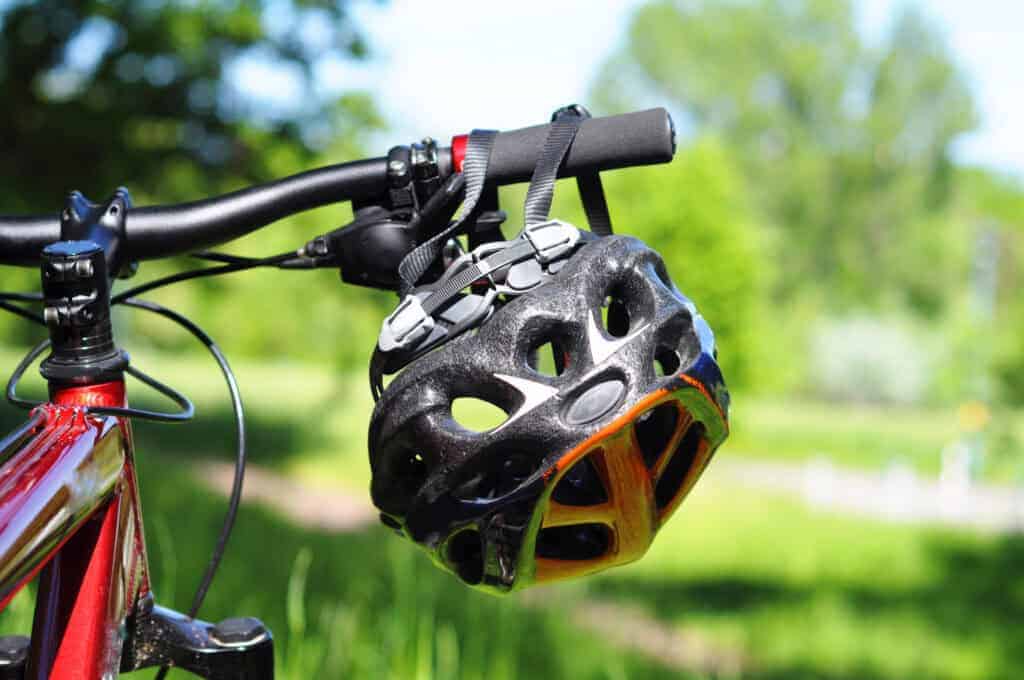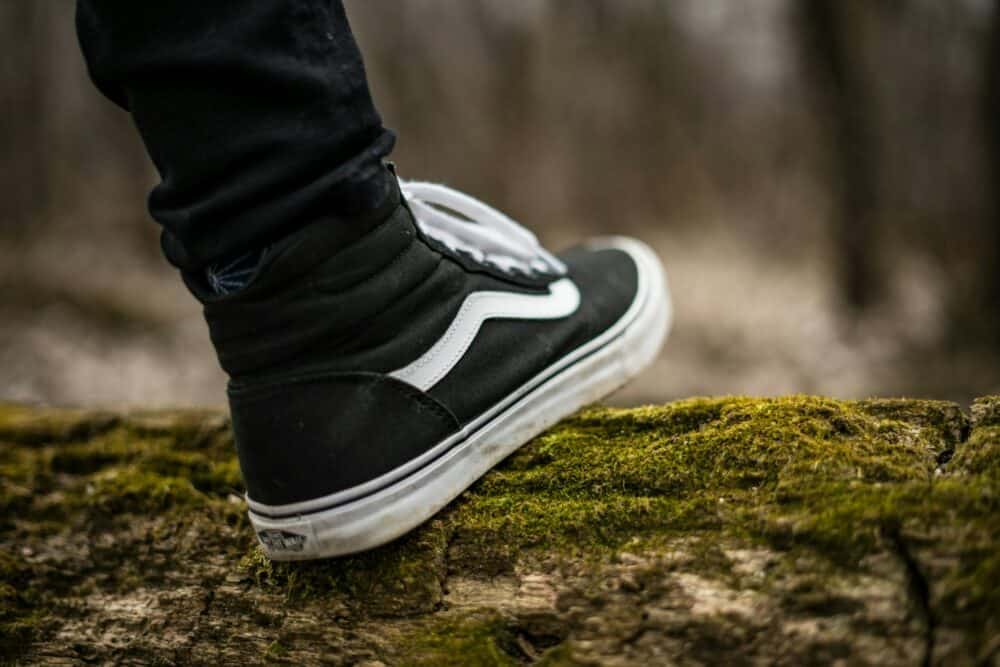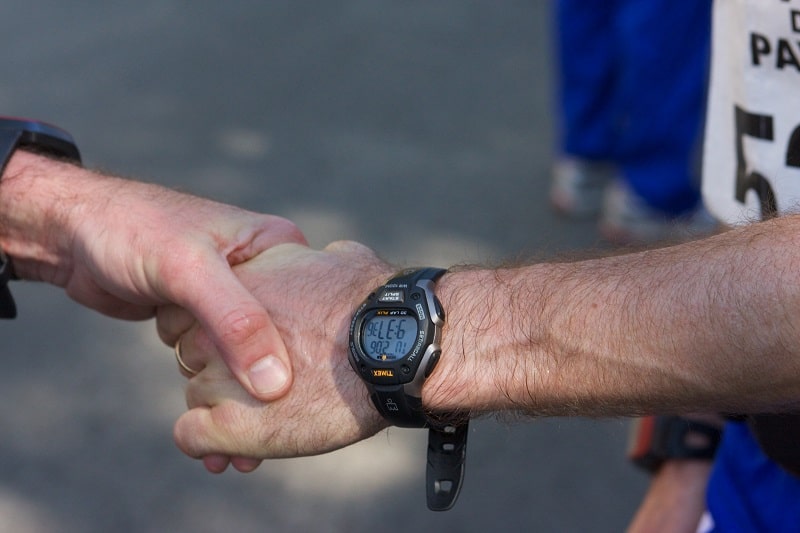I’m going to kick things off by getting straight to the point: your mountain bike helmet isn’t just another accessory; it’s a vital piece of safety equipment.
It’s designed to protect your head from impacts that can occur while riding over rough terrain. So, knowing the lifespan of your helmet is crucial for maintaining this protection.
A helmet’s recommended life is typically 3 to 5 years, but this range can be affected by various factors, such as usage frequency, care, and exposure to the elements.
You’re going to find out about a few tell-tale signs that suggest it’s time to consider a replacement.
These include visible cracks, a brittle outer shell, fading colors, or if the helmet has sustained a significant impact, even if no damage is apparent.
This isn’t just about aesthetics; even seemingly minor signs of wear can compromise the helmet’s structural integrity.
And here’s the kicker: using a compromised helmet can exponentially increase the risk of injury.
After all, the materials used to construct helmets degrade over time, which can severely diminish their impact-absorption capabilities.
If you ignore these warning signs, you might as well be riding without head protection.
Stay tuned because in the next section, I’m here to help you with actionable tips on daily helmet care that can effectively extend its safe, functional lifespan.
Trust me, a little maintenance goes a long way, and you’ll be glad to have a trusty helmet over your head when you’re conquering those mountain trails.
Maintenance Matters: Daily Care for Your Helmet
Taking care of your mountain bike helmet isn’t just about extending its lifespan; it’s about ensuring it can protect your ride after ride.
I’ll walk you through the basics of proper cleaning and handling, which can make a world of difference.
You’ll learn the best ways to clean your helmet without causing material degradation.
This will include which cleaners to use, how often to clean it, and which parts of the helmet need the most attention.
Storage is crucial, and I can’t stress this enough.
Choose something that resonates with you in terms of space and convenience, but make sure it is suitable for cool and dry conditions.
Avoid extreme heat or cold, and steer clear from direct sunlight, as UV rays can weaken the helmet’s structure over time.
How you handle your helmet also plays a part in its durability.
I’ll share some habits that may seem trivial but can prevent accidental damage, such as scratches or dents, that can compromise your helmet’s integrity.
Regular inspection rounds off your helmet maintenance routine.
After all, catching any minor issues early can prevent them from turning into major problems down the road, ensuring you remain safe on all your biking adventures.

Smart Upgrades: When to Replace Components vs. the Whole Helmet
You’ve been diligent about helmet care, but sometimes parts wear out or new technology catches your eye.
I’ll explain how to tell if you need a full helmet replacement or just a component upgrade.
Mountain bike helmets have several parts that could be replaced independently.
This includes the retention system, comfort liners, and visors. It’s key to assess each part’s condition regularly.
A decision to replace the entire helmet might not be necessary if the issue is with a removable liner, which has seen better days.
Manufacturers often offer replacement pads to keep your helmet feeling fresh.
However, if the helmet’s core is damaged, it’s time for a new one.
Cracks, compromised foam, or a damaged shell show that you need more than just a new part.
Always opt for genuine replacement components from the helmet’s manufacturer.
Third-party parts can compromise the helmet’s safety and fit, which defeats the purpose of upgrading any single part.
If you’re not confident about installing new parts, head to a local bike shop.
A professional can ensure everything is set up correctly, keeping you safe on your next ride.
Next, you’ll learn how to make your helmet last through seasonal changes and what to do after it’s had a rough hit.
This isn’t just about extending the life of your helmet—it’s also about ensuring you are always protected on your rides.
The Long Ride: Making Your Helmet Last Through the Seasons
Seasonal wear and tear on a mountain bike helmet is inevitable, but it doesn’t mean you must replace your protective gear yearly.
Just like tuning your bike to match the changing weather, you can extend the life of your helmet with a few seasonal care strategies.
In the scorching summer heat, make sure to store your helmet in a cool, dry place out of direct sunlight.
UV rays can weaken the materials over time, reducing their protective capabilities.
During the damp winters, ensure your helmet is completely dry before storing it to prevent the growth of mildew or the breakdown of padding materials.
Spring and fall can bring unpredictable weather, so check for damage after riding in rainstorms or gusty conditions.
After a heavy downpour, remove the pads and let them air dry thoroughly to maintain their shape and function.
Despite your best efforts, accidents happen, and helmets are designed to protect you exactly once.
So if you’ve taken a significant fall or impact, it’s time to get a new helmet. But before you do, consider talking to a professional who can provide a thorough inspection.
They can offer valuable advice on whether it’s possible to extend your helmet’s life a little longer or, if safety dictates, it’s time for a new one.
Remember, being proactive about your mountain bike helmet’s care ensures your safety and saves you money in the long run. You’ll find that choosing something that resonates with you—whether it be a particular maintenance routine or a professional service partnership—will pay off by providing peace of mind while you’re out there on the trails.
To extend the lifespan of your mountain bike helmet, proper care and maintenance are essential. Clean it regularly with mild soap and water, store it in a cool, dry place away from direct sunlight, and inspect it frequently for any signs of damage. Replace the helmet every 3 to 5 years, or immediately after a significant impact, as materials degrade over time, compromising its protective capabilities.

People Also Ask:
How often should I replace my mountain bike helmet?
Helmets should be replaced every 3 to 5 years, even if no visible damage is present. Over time, materials like foam and plastic degrade, reducing their ability to absorb impacts. However, if your helmet sustains a significant impact, it should be replaced immediately, as it may no longer provide adequate protection.
What are the signs that my mountain bike helmet needs to be replaced?
Key signs include visible cracks, a brittle or faded outer shell, and significant impact damage, even if no cracks are visible. Additionally, if the helmet feels loose or the retention system no longer works properly, it’s time for a replacement. Regular inspections can help you catch these issues early.
How can I extend the life of my mountain bike helmet?
To extend your helmet’s life, clean it with mild soap and water, avoid harsh chemicals, and let it air dry. Store it in a cool, dry place away from direct sunlight to prevent UV damage. Handle it gently to avoid accidental scratches or dents, and regularly inspect it for signs of wear or damage.














Hi there,
I really appreciate the fantastic tips on extending the lifespan of a mountain bike helmet! As both my wife and I are avid bike riders, maintaining our gear is crucial for us. Your advice on daily care and recognizing when to replace components vs. the whole helmet is incredibly useful. We’ve always wondered about the best practices for helmet maintenance and avoiding hidden issues, so your insights are a great help.
One question: have you ever encountered any specific challenges with helmet care or maintenance that you think other riders should be aware of?
Thanks again for the valuable information. We’re looking forward to more helpful tips in the future!
Best,
Opa
Hi, Opa Rambler.
Thank you for your kind words.
It’s great to see the benefit of the article.
I believe I have covered the most important things. But maybe it is correct to stress one thing that people sometimes forget: the danger of moisture damage.
Excessive moisture can lead to mold, mildew, or rust.
Remember to let your helmet dry thoroughly in a well-ventilated area after cleaning and avoid storing it in a damp environment.
Too. Sometimes, people need to find out if their helmet is damaged. Here is a good article about this.
Don’t hesitate to contact me if you need anything else or have any questions.